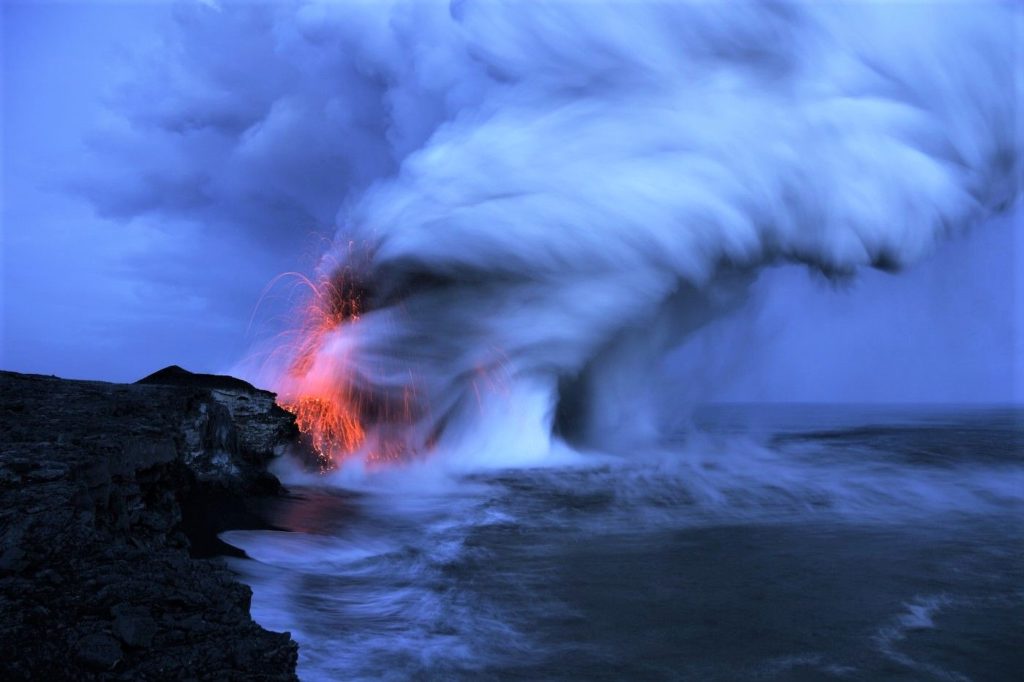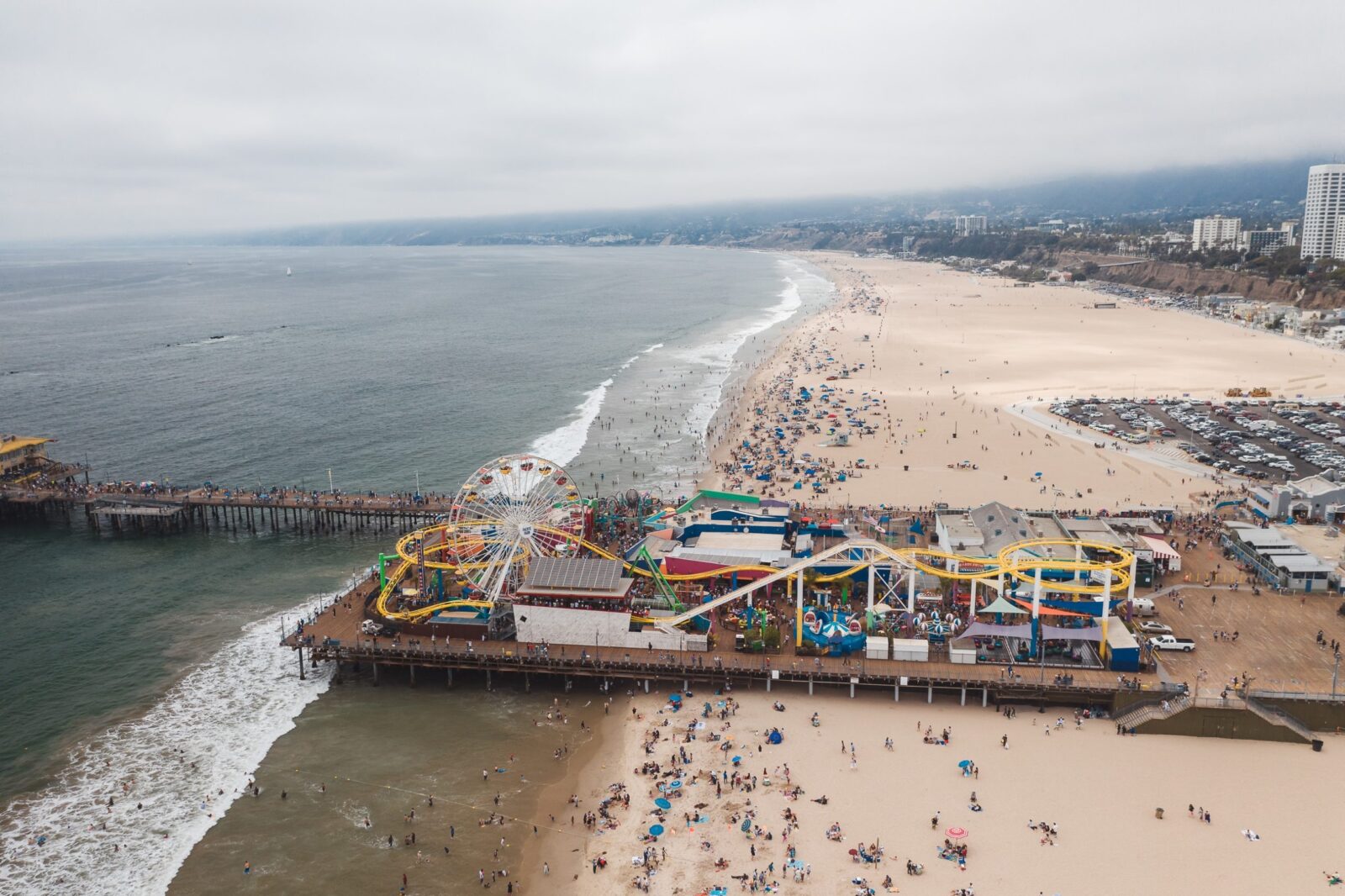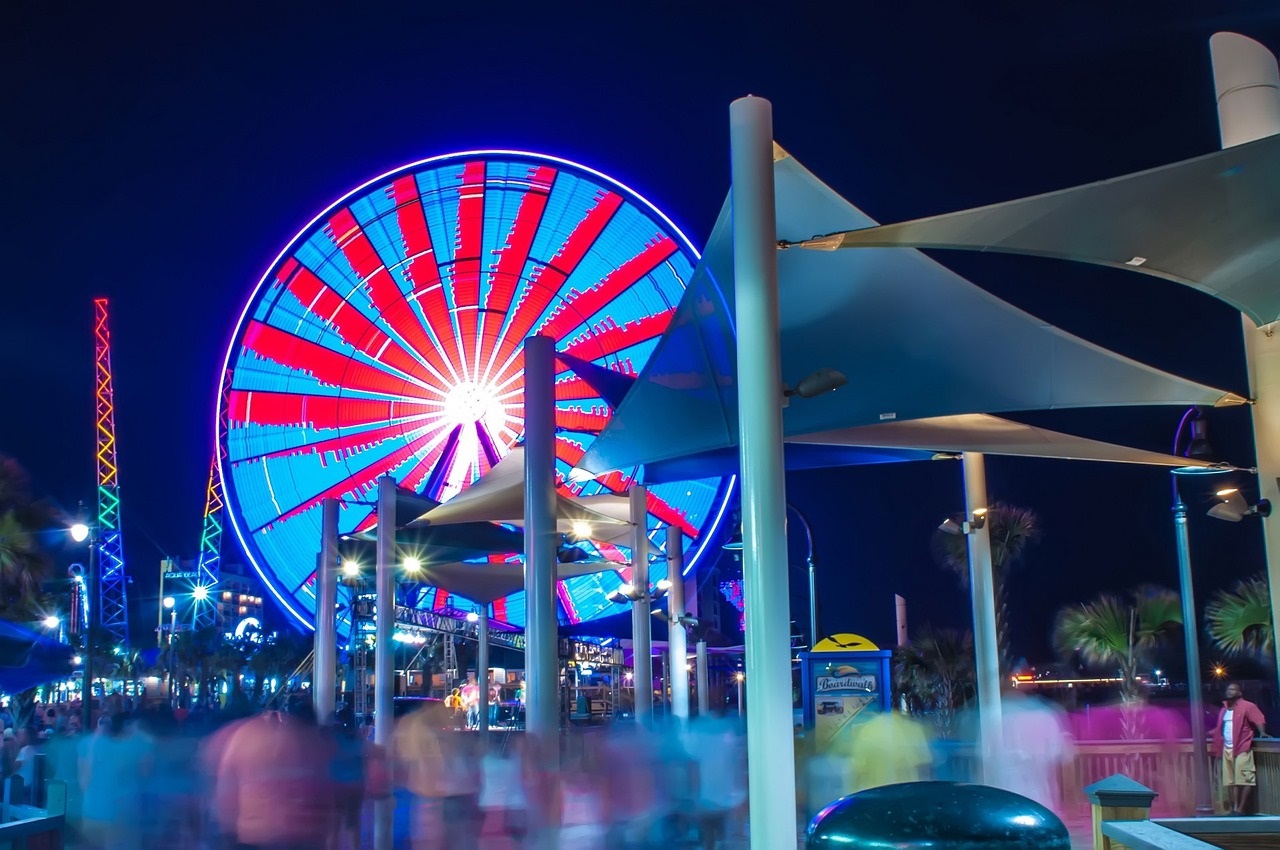Is Hawaii a volcano based island … or not?
But before answering the question: Is Hawaii a volcano based island … (I promise you will find out more about it, towards the end of the “story”) … a few scenery depictions.
All the way up and around the summit, the native forest and volcano landscapes of Kīlauea (probably one the of most renowned volcanoes of this bunch of arcane islands), Hawaii is just a weird place.
Full of all shades of green ferns, flowering plants, insects and birds that you can only find here, or only in a certain tube of lava on the flank of Kīlauea.
A few more …
My favorite hike to the park is full of these. The Kilauea crater path is weaving like an anaconda through the forest above the edge and then down across the stiffened lava lake that formed below as an ashen floor.
The forest part of the trail is full of akacia koa trees. These knobbly trees with almost black “body”, sticky leaves and delicate red callistemon blossoms have developed over the centuries to be able to block their cells’ pores.
This is a remarkable defense system in case of foreign not welcomed guests, like sulfur dioxide of a volcanic eruption. – They have practically developed their own gas mask.
Also along the way we have the native mint, except it has no mint flavor or aroma because that energy -consuming defense against insects it was not needed on this isolated island.
So, it slowly disappeared, leaving a mint-less mint.
… interesting facts
Furthermore, we have mamaki, our nettle-less nettle. Nobody needed the thorns on its brothers from other parts of the world. That is because here there were no wild grazing mammals, so they slowly atrophied to nothing.
As I walk the forest part of the trail, my dusty boots are gritting onto the volcanic ashes. It sounds like walking on the moon (I imagine) or old frozen snow, but still the air is redolent.
Up in the branches I hear the jazzy notes of native forest birds – the flamboyant ‘apapane and the lime-green amakihi.
Both are endemic honeycreeper finches, related species that are their own remarkable evolutionary story. Halfway along the Kilauea Iki trail, I descend a short foot path to the open crater floor.
On any fine day with clear, blue skies, the crater is pretty glittering – sun-heated steam rises from the black cinder surface as lava-heated steam rises from small white and yellow fissures in the crater floor.
But when fluorescent clouds roll in it gets even better – a fine mist soon tickles my face, then grows to a light rain tapping on the hood of my rain suit like sweet kisses from your loved one: T-h-i-s i-s m-a-j-e-s-t-i-c.

Volcano …
is-hawaii-a-volcano-based-island-or-not
On an average Sunday morning in Volcano village, right near Hawaii Volcanoes National Park, I go directly to the village farmers’ market.
Here, villagers and visitors find breakfast, lunch and dinner to go – homemade pastries, waffles, fresh breads, curries, chili, and lots of Big Island products.
It could be fruit, veggies, cheese, fish – almost everything for an afternoon “social affair” (drinks and juices are just across the street at one of the two general stores).
Despite from indulging myself on all these edible goods, I also love these trips to the Sunday market.
Why is that?
It is because I have the chance to interact with the local “biped fauna” of Volcano village, as it tends to commit also in social ceremonies, and I mean simply talking.
… and Tim
One fine specimen is Tim (Tunison). Usually around, he wears his white hair long and has a soft smile that might reveal in any moment a sarcastic nature. “I love Volcano and I’m here for the long-run.” he says.
Why you may ask? For one thing, he doesn’t like dry.
“I get really nervous when things get dry,” says Tim, perhaps it is due to the fact that he once lived in California’s Sonora Desert.
Tim, who is now a retired resources manager at the national park, is a “connaisseur” on the area’s local plants, though I have the feeling that he is able and can easily hold a conversation to the spirits of the island too.
He is also one of the most reputable and focused community fighters against the invasive population of frogs with a funny look and name “coqui”. That is why they earned a very well- deserved title the “Coquistadores”.
Early morning walk
One of the things I like to do when on the island is to make an early walk before sunrise and see the massive crater of Halema ‘uma’u on the crest of Kilauea volcano.
At dawn the sky turns from “black measles” kind of to purplish-blue and then to bright blue. The fire volcano abyss fades from red to orange to steamy white and makes my face warm and cold in the same time.
A slim and long cluster of bright stars stays high on top of everything like a fire whip of an unearthly mistress ( I wouldn’t know, I just imagine ).
Once I have heard some tourists from the cities say: “This looks surreal!”. Under a full moon, you can read a book by its light.
Half a mile below, is an orange pit of an underground lava pond, with vertical rivers of steamy clouds like the heavy breath of the volcano goddess Pele. Legend says she lives beneath.
When the wind is right you hear the volcanic vent calling like a god’s whisper. There is no doubt that Pele’s presence as the orange white steam emulates towards the surface as a hypnotic hula.
Come here before dawn to witness this, and your life will never be quite the same – and you haven’t even had breakfast yet.
One of the most remote islands from any piece of land
Some species on these isolated islands are still in danger. Plants and animals migrated to Hawaii over the centuries as each island started to rise bold from the ocean core.
Slowly by slowly species of plants and animals arrived by: wind, wave or the wings of birds. They adapted and evolved – or died.
There are still single local species that are still dying here, mainly due to other invasive alien species – aggressive weeds or mosquitoes or rats.
The Hawaiian Islands have the tough reputation of being the tomb of more than 270 local species now extinct. And currently there are more than 300 officially endangered species of plants and animals here.
Despite all of these there are stronger native species that continue to boom and evolve – lava tube spiders that are blind, lichens that promise to cure cancer, geese with no webbed feet.
Oh yeah … the question … so, is Hawaii a volcano-based island or not?
I guess you will figure that out yourself …

- They have a deep-down volcano goddess – Pele;
- A village called Volcano;
- Some sort of melted lava river from Hawaii National Park, that UNESCO declared it a World Heritage Site in 1987;
- There are still three active volcanoes in Hawaii – Kilauea, Mauna Loa and Hualalai. Another one, the sleeping Mauna Kea, they are saying last erupted more than 3,500 years ago. And the last one, Kohala, is now extinct for not erupting more than 50,000 years ago.
Just dropped the mic … see ya!






